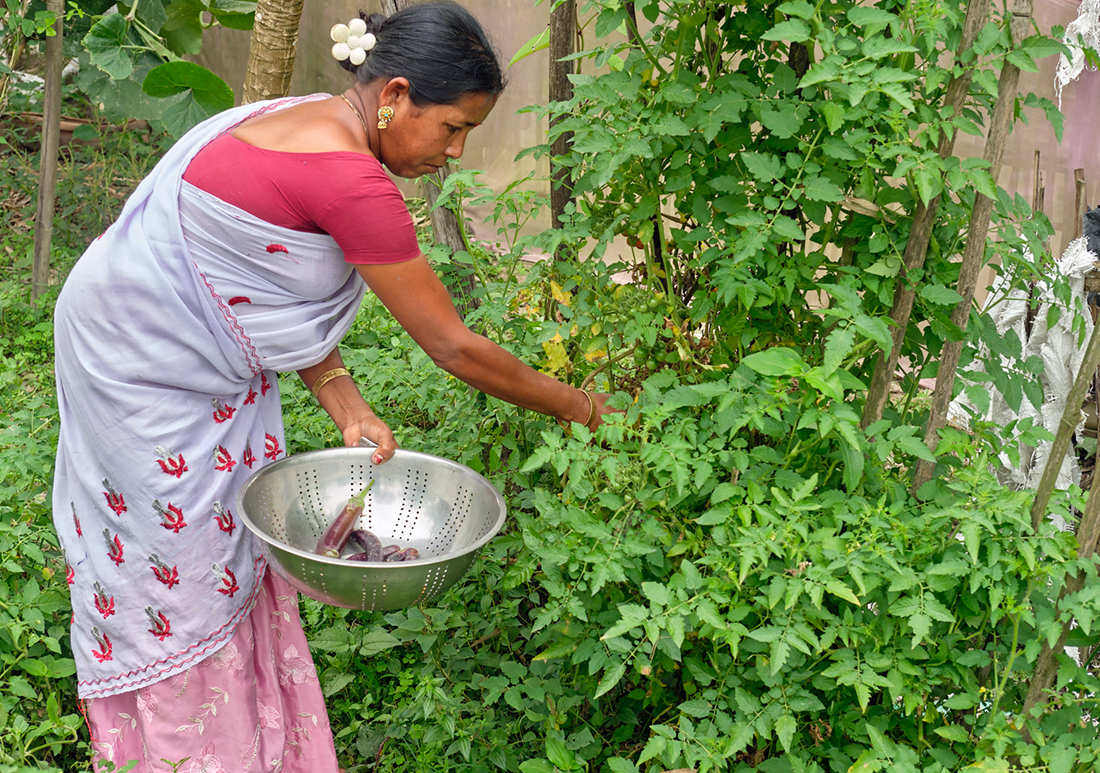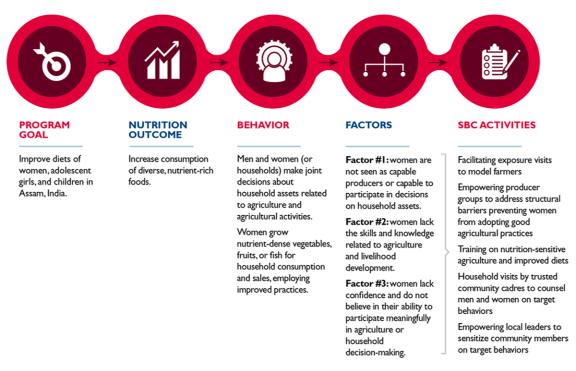
Behavior change is essential to improving nutrition through agriculture-led approaches. However, changing behaviors can be difficult, so practitioners often use social and behavior change (SBC) formative research to understand the factors that influence targeted behaviors, such as those that can result in improved dietary intake or adoption of a target agricultural practice.
In 2022, USAID Advancing Nutrition conducted SBC formative research in rural Assam, India, to identify priority behaviors that could improve incomes and positively affect household nutrition. To ensure that program participants were central to the process, the project used a human-centered design (HCD) approach. This approach involved engaging participants as co-creators to select behaviors and design nutrition-sensitive agriculture activities with the project team.
Based on the formative research, the project and participants prioritized key behaviors and SBC strategies. Specifically, participants prioritized two behaviors that they felt would have the greatest impact on their agricultural productivity, and thus have a positive impact on income and overall household dietary diversity. These included—
- Men and women (or households) make joint decisions about household assets related to agriculture.
- Women grow nutrient-dense vegetables, fruits, or fish for household consumption and sales, employing improved practices.
The project found that program participants lacked the necessary confidence, skills, and knowledge, access to productive resources and information, and support from family and community members.
From 2022 through 2023, USAID Advancing Nutrition will implement SBC and nutrition-sensitive agriculture activities to address factors affecting the adoption of the targeted behaviors. Activities will include trainings on good agricultural practices to increase knowledge, skills, and confidence, or community sensitization activities to address social norms. By taking an HCD approach, the project seeks to empower rural women, increase their access to economic opportunities, and improve the consumption of healthy diets in the region.
